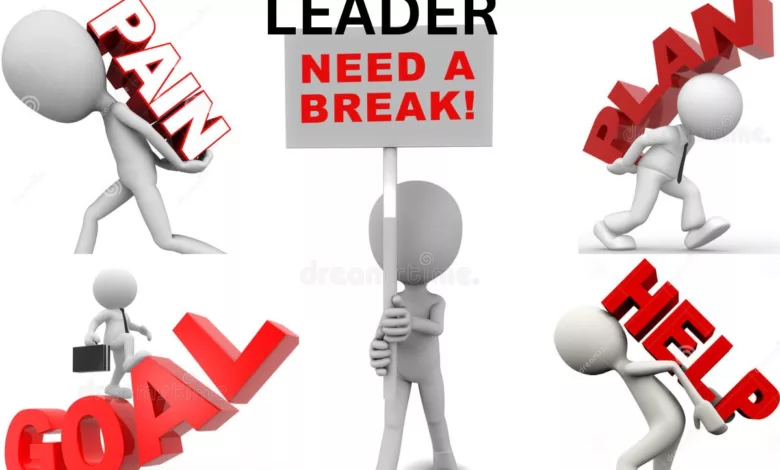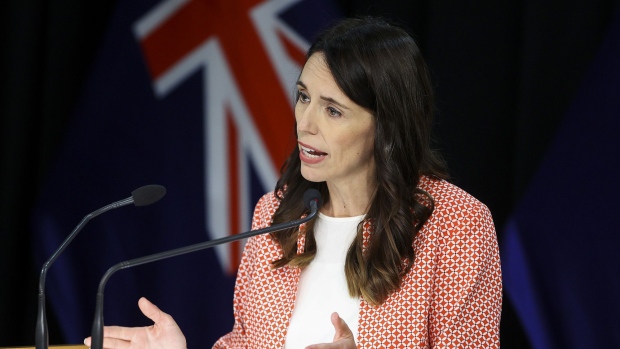5 signs to Step Down from the leadership role- a move towards a progressive economy!

Jacinda Ardern of New Zealand and Reed Hastings of Netflix both made news when they announced plans to step down from their respective posts. But how can leaders know what is the appropriate time to take that courageous call?
With both New Zealand Prime Minister Jacinda Ardern and Netflix co-founder Reed Hastings announcing their resignations from leadership roles last week, the subject of when to go has become increasingly pressing. Many CEOs have been criticized for remaining in their positions; for years. Others have been chastised for their lack of succession planning, which has left Carlyle Group without even a CEO since August when the founders fired the one they chose.

Why is it important to step down as a leader?
Everyone makes errors. Even the most successful and renowned leaders have made fatal leadership mistakes. It is one of the most effective methods to learn, grow, and become more productive. At the same time, not everyone is cut out for a position of power.
Of course, accepting that it’s time to break ways with your company is one of the most difficult things a CEO can go through, especially if they started it. For the broader good, this consciousness and honesty may help to nurture and advance what work has been established. But how can you know when it’s time to hand up the position as a leader?
Here are a few obvious red signals that indicate it’s time for a person to step down.
When you do not have time.
A person’s priorities are often shifting, and their capacity to accomplish good work is no exception. When personal and professional commitments clash, you may need to resign from an executive or leadership role. For example, maybe your increasing job duties have made it difficult for you to devote time to your children. Perhaps you or the individual you’ve hired to care for an ailing or aging parent are not meeting your caregiving obligations sufficiently. These are symptoms that you are doing excessively and should stand aside from your leadership position.
When you discover you lack the time to devote to the position, you know you shouldn’t be leading. It’s a time-consuming job. Leadership necessitates close observation of people around you, what they are undertaking and why, who is succeeding the most, who deserves support, and who requires more guidance. If you lack the time, delegate the position or stand aside. Often, pride determines whether anyone should continue to lead. Of course, it ought to be you—you are the most intelligent and gifted! However, it is much wiser to recognize that you are not the proper person to be the leader since you need to focus on other things.
The recent step-down news of Newzealand PM Jacinda Ardern has initiated the concept of stepping down for family responsibilities.
You’re dying from stress.
Leading people requires both physical and mental effort. It’s nerve-wracking. If the position is causing you too much stress, it may be time to look for another individual to lead. Some stress may drive you—you are emphasized because you care. Then exists the different tensions that kill you from the core. It’s the tension of not being matched to the work, of being overloaded and completely uninspired. Being able to identify stress is vital since it is conceivable that it may not go away unless you take a break.

“Politicians are people, too. We give all we have for as far as we can, and then it’s time to go “Prime Minister Jacinda Ardern announced the end of her five-and-a-half-year tenure in an emotional speech. It is rare for a leader to admit to being exhausted, but, understandably, the stress of managing a country may take its toll.
There is a better alternative.
Someone in your organization or on your staff may be a greater leader than you eventually, and it may be time to pass over the reigns. Also, there will come a point when you have been in charge for a long time and you will cease inventing and learning new skills. If you believe your status has made you comfortable, you should delegate authority to someone else. When your tasks no longer challenge you, it is time to search for a replacement. In either case, you must put your ego aside. You could become a better counsel to the supreme leader at some time.
Bill Gates stood down as CEO in 2000, but before he did, he stated that he would continue to serve Microsoft whenever he felt the firm needed him. Satya Nadella is the current CEO of Microsoft. Mr. Gates is actively interested in philanthropy and financing, and he serves as the chairman of the Bill & Melinda Gates Organization, the world’s biggest private philanthropic foundation. He also adopted a village in Bihar, India.
A poisonous and hazardous work atmosphere has developed.
It is your obligation as a leader to establish a pleasant work environment. Employees feel happier, work more effectively, and are eventually more productive when a nice work atmosphere is promoted. What happens if you don’t actively promote a positive work environment? It’s self-evident that if you’re not actively involved in constructing, you’ll be destroying or doing the reverse of what you did earlier for your team.

What exactly constitutes a hazardous workplace? It’s a place where underachievers are tolerated and where disregarding criticism and dismissing facts is the practice. Communication failures will occur, as will the deployment of ineffective policies and processes. A disengaged boss tends to treat his or her people differently.
Ashneer Grover, co-founder and managing director of BharatPe, has resigned from the financial firm and its board, stating that he has been ‘demonized’ and treated most disrespectfully, capping an elevated fight that has lasted for nearly a year.
There is no longer room for advancement, and you can contribute to something else.
Every leader reaches a point where there is no more room for advancement. You’re finished when you believe you’ve accomplished what you set out to do. When you feel there is no more room to learn or think, you should stand aside from your post and let new leaders take the lead.
A properly groomed future leader may also contribute more to the organization, which will assist generate growth opportunities. Remember that nothing is permanent; every product has an expiration date. Similarly, when you obtain the position you desired and believe you have learned everything and have no more room for advancement, then.
Tata Sons (Former Chairman of TATA group)
TATA group is today one of the most promising brands in the world; from LandRover to TATA steel to chemical industries, TATA group has done it all for the country. Ratan Tata stepped down as chairman in 1991; Natarajan Chandrasekaran is the current TATA group chairman. He invested in several businesses in India and gave jobs to promising applicants after relinquishing all of the TATA group’s duties. His retirement from the role was also influenced by his age. Aside from that, he plays an important role in dealing with and supplying fighter planes to the Indian Air Force.
The final call before you step down.
It is not a negative thing to retire from a position of leadership. We mean “not awful” for both the firm and yourself. Some leaders may face a scenario in their careers when they will have to deal with the realities of the issue. It is not always related to your present leadership abilities. Its simple job strain, or occasionally work becomes too toxic, or you’re beginning to believe your team would be more effective with someone more substantial.

When you discover that the call to step down is a sensible option for the future of your organization, or you have personal duties to prioritize, it’s time to take that courageous call.
edited and proofread by nikita sharma




